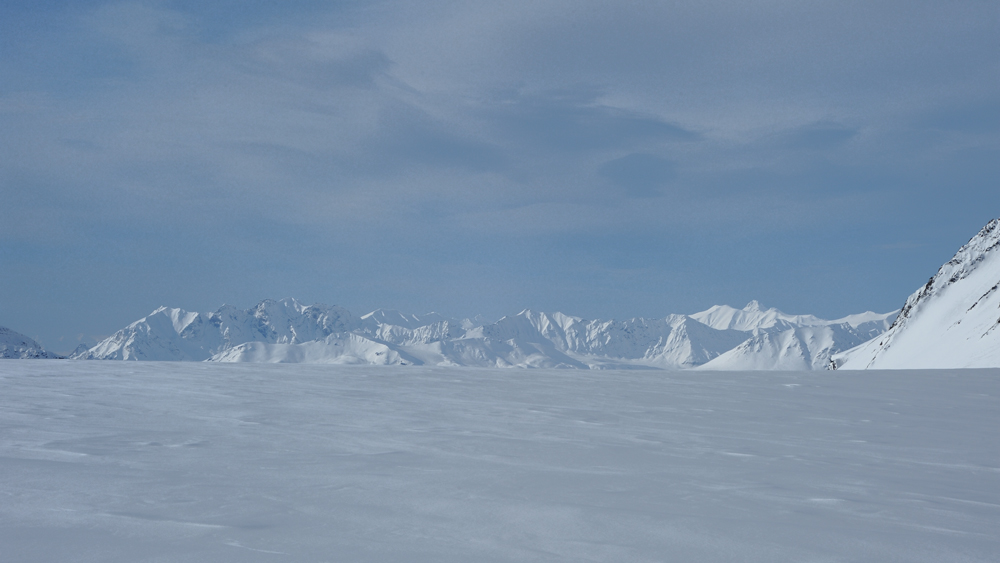
Spitsbergen
Spitsbergen. What, why, and how.
Spitsbergen. Voyage. Longyear
Spitsbergen. Ymerbukta
Spitsbergen. Esmarkbreen
Spitsbergen. Nansenbreen. Borebreen
Spitsbergen. Whiteout
Spitsbergen. Borebreen. Vintervegen
Morning of the May 3 brought sunny sky with some clouds, -8C, and moderate (comparing with yesterday ones) wind.
View down to Vintervegen
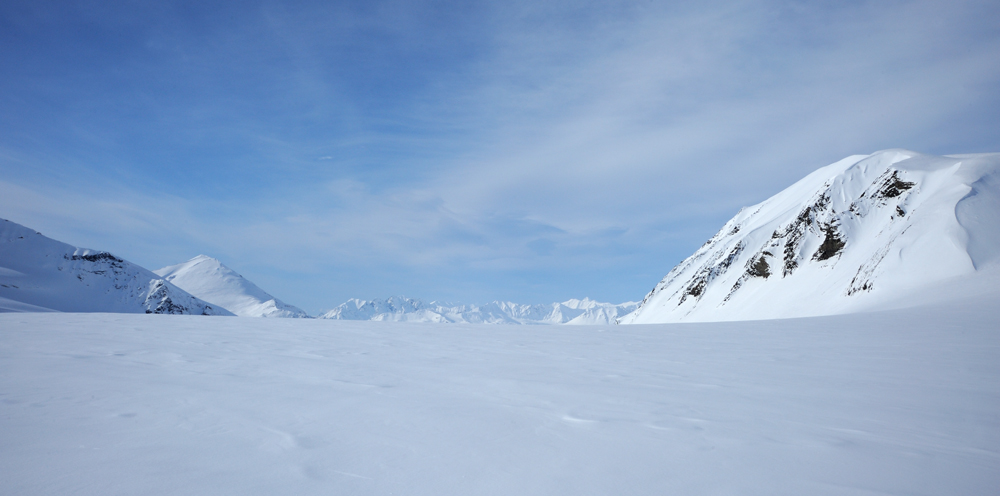
And in the opposite direction
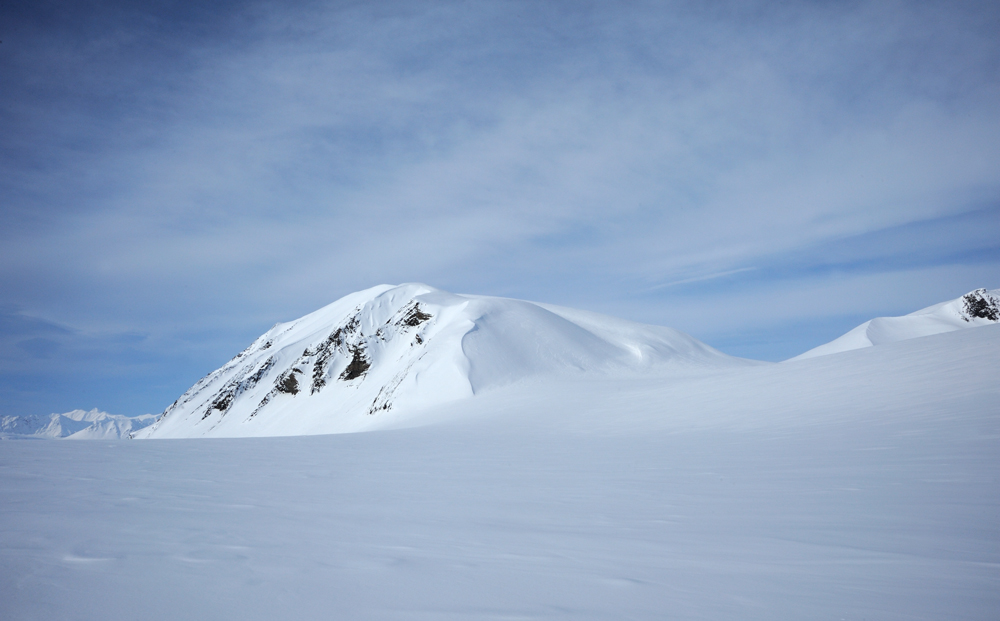
Packing
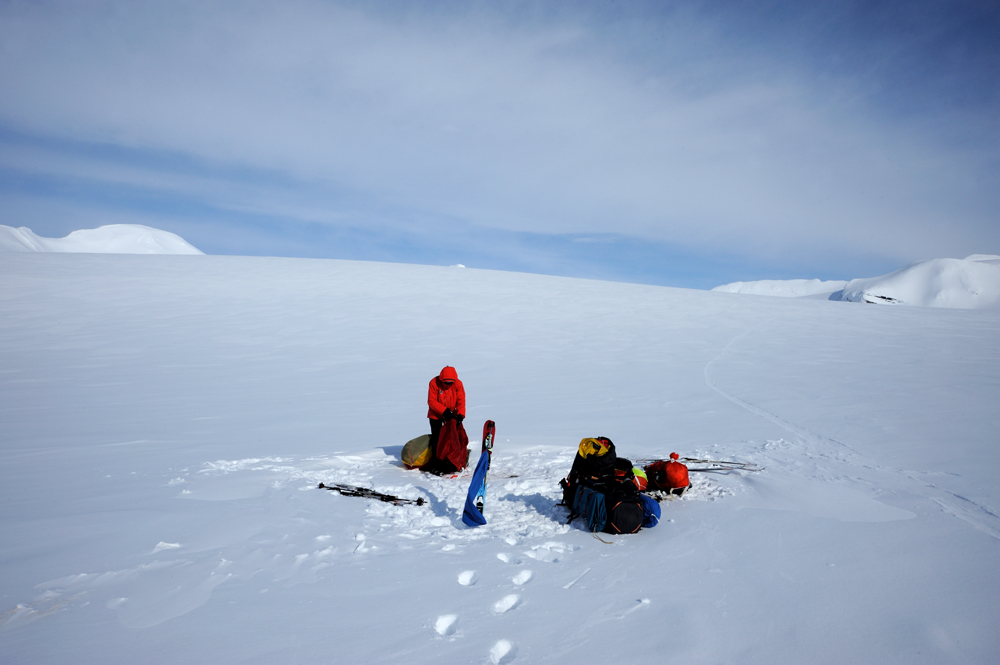
When the question with Wahlenbergbreen was completely closed, the only Osbornebreen glacier left for us for our way to the north (well, some exotic variants also, but we didn’t want even think about them before it would be really necessary). How we saw from the top, the lower part of Osbornebreen is ragged and unpassable. There is some variant – bypass the crevasses using the moraine, but we decided to leave it as the next step, and for the first attempt to try directly reach the upper part of Osbornebreen. For this we planned to ascent the pass to Klampebreen glacier, try to descent along this glacier (we had no idea about its conditions), cross Devilkbreen glacier, reach Austre Osbornebreen and move up along it. If everything would be passable, of course.
Map. The pass is marked by the cross.

Here is the pass
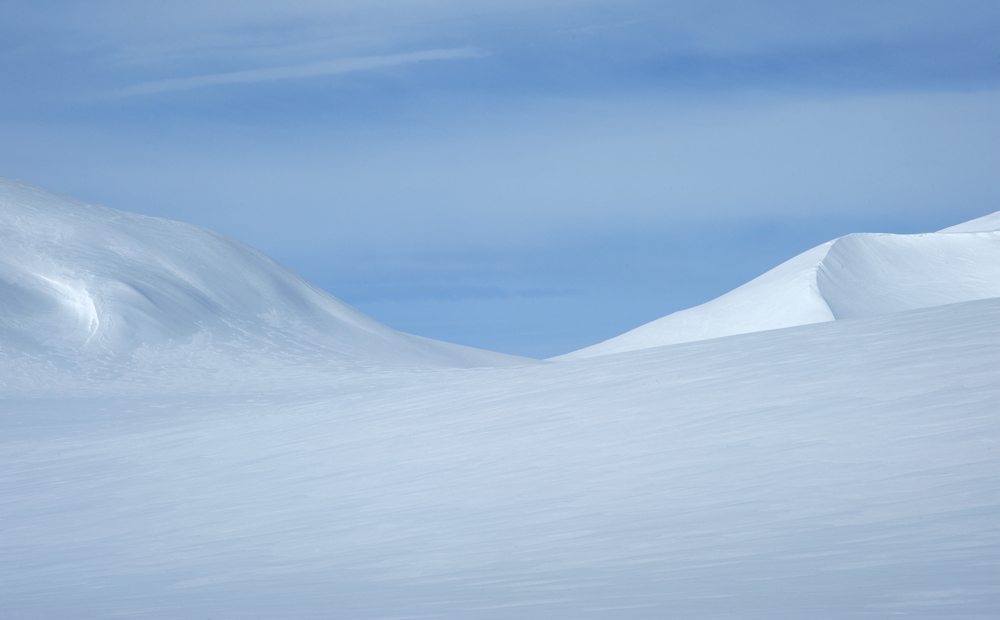
On the way up
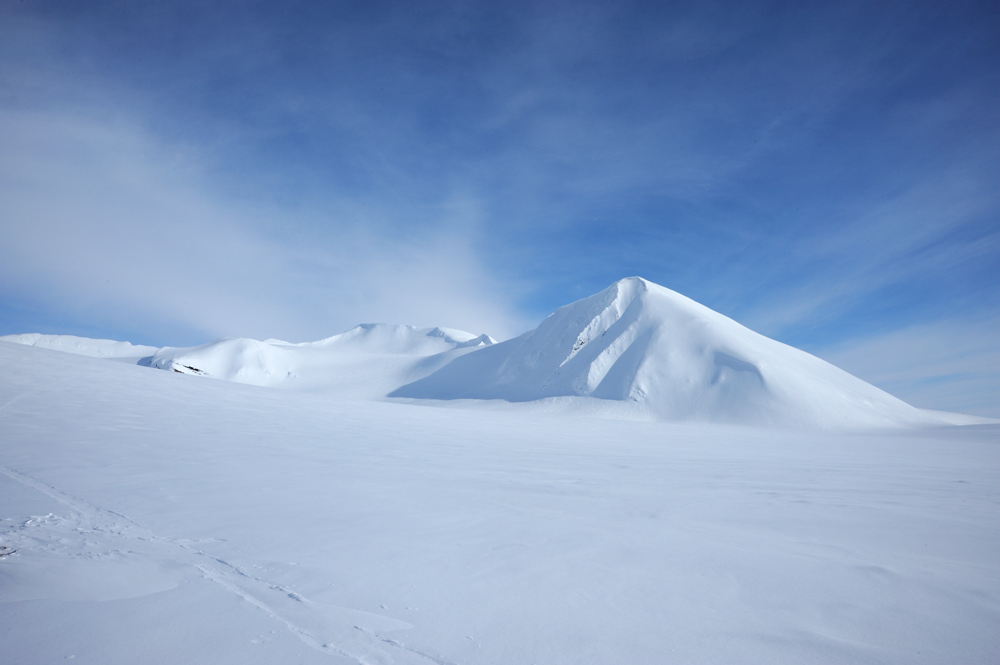
On the top of the pass. View back.
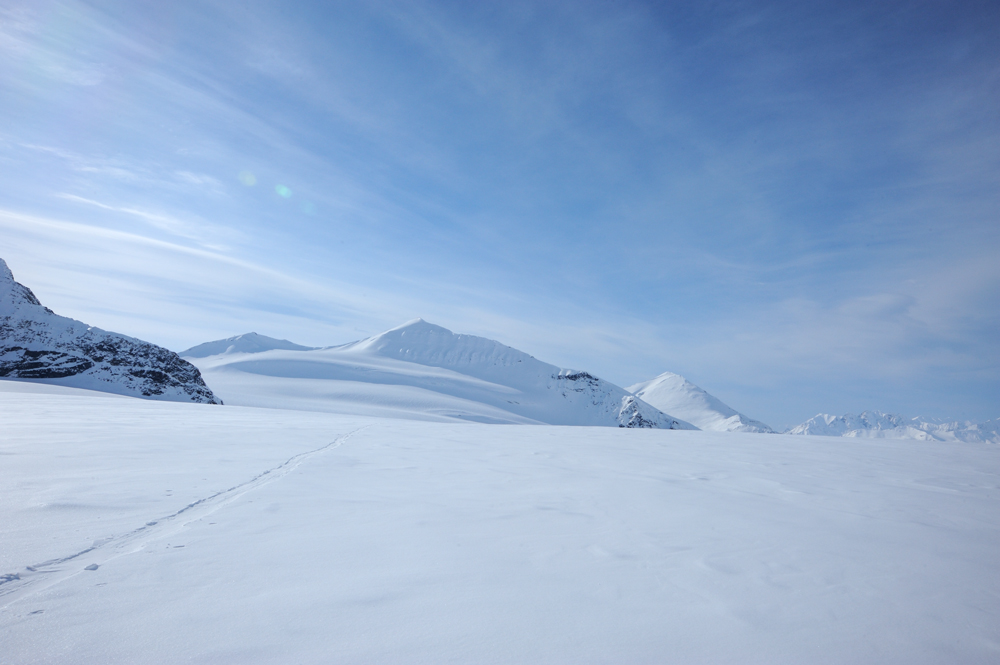
View in front of us.
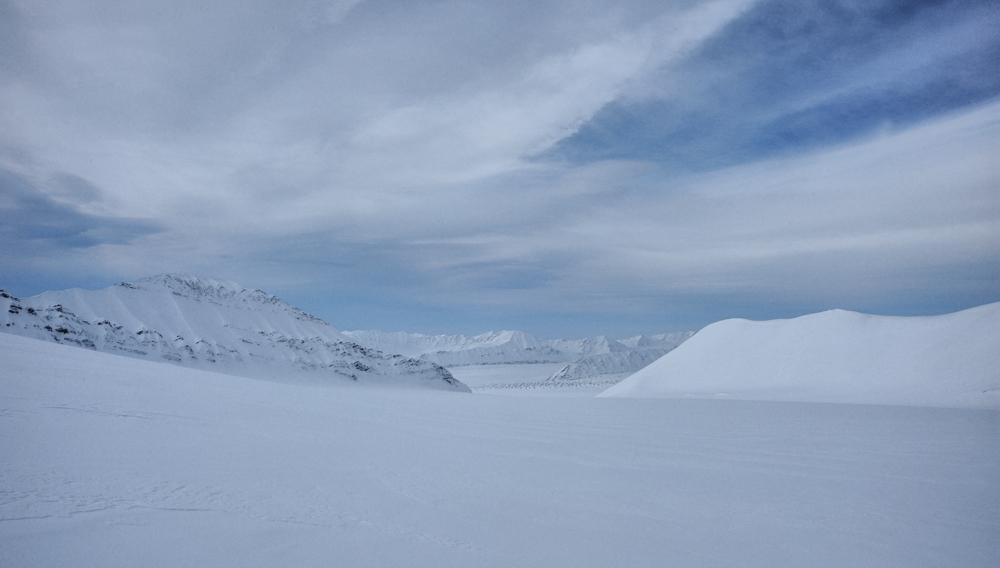
The pass is nice and smooth from both sides, and Klampebreen glacier, our way to Osbornebreen, is also nice and smooth. Osbornebreen itself on this level also brings hope, the numbers of crevasses decrease with distance from the ocean. So, there is a hope to pass it.
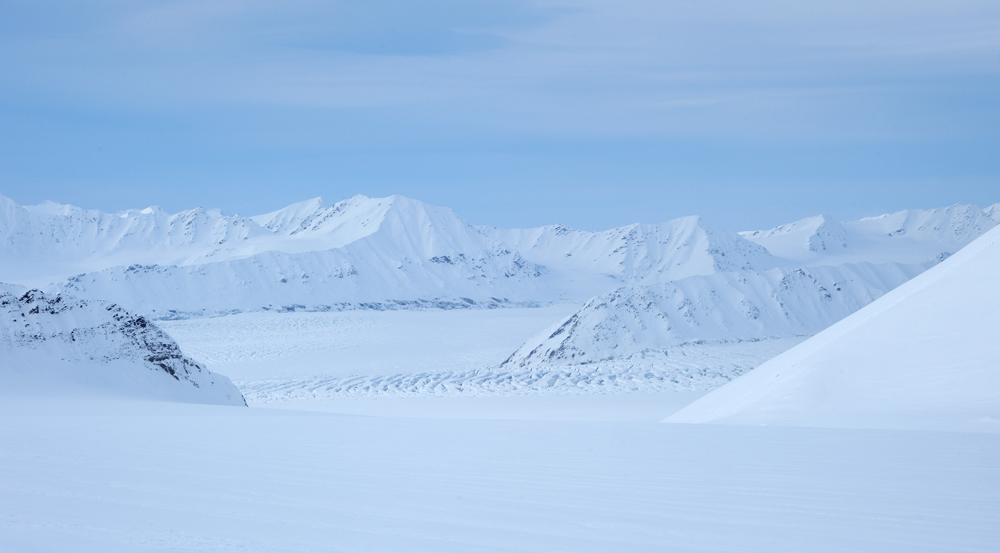
Descent
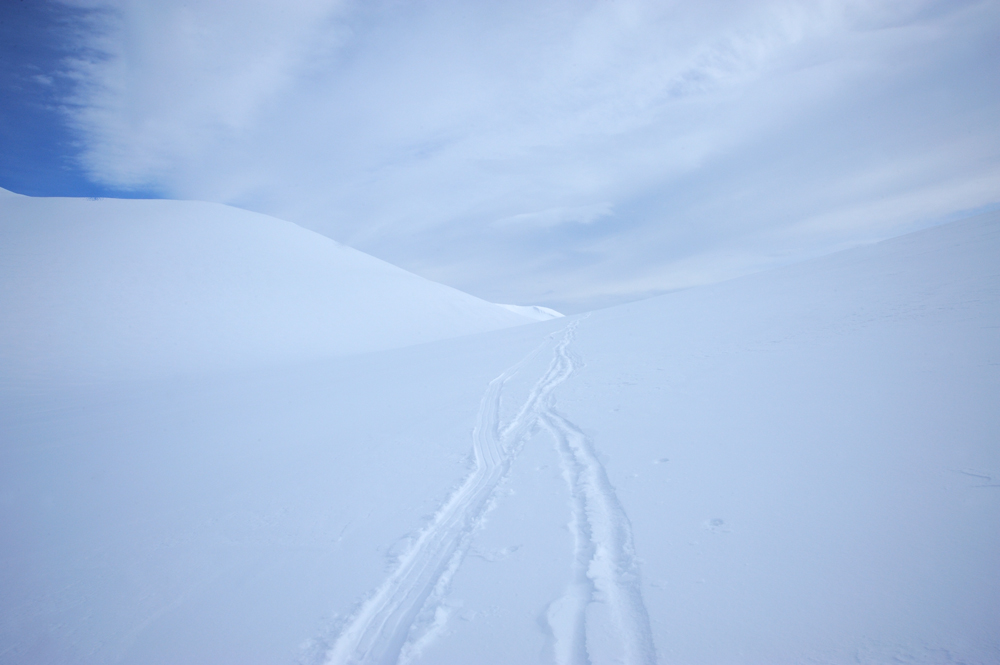
On Devilkbreen glacier.
From this place it is easy to see that the bay was open and we didn’t have chances to cross it, so Osbornebreen was our only variant.
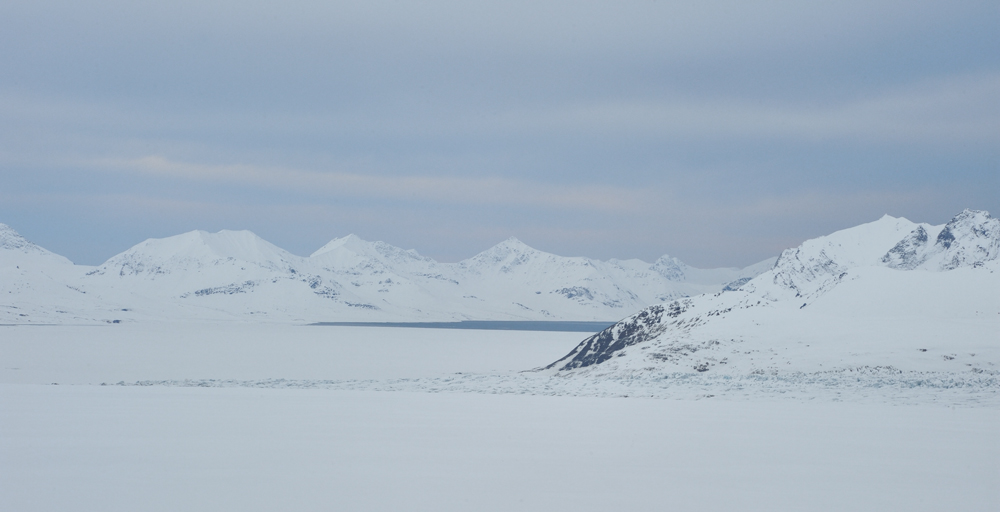
As soon as we descended from the pass, the clouds started to cover the sky, and the wind increased significantly.
Devilkbreen
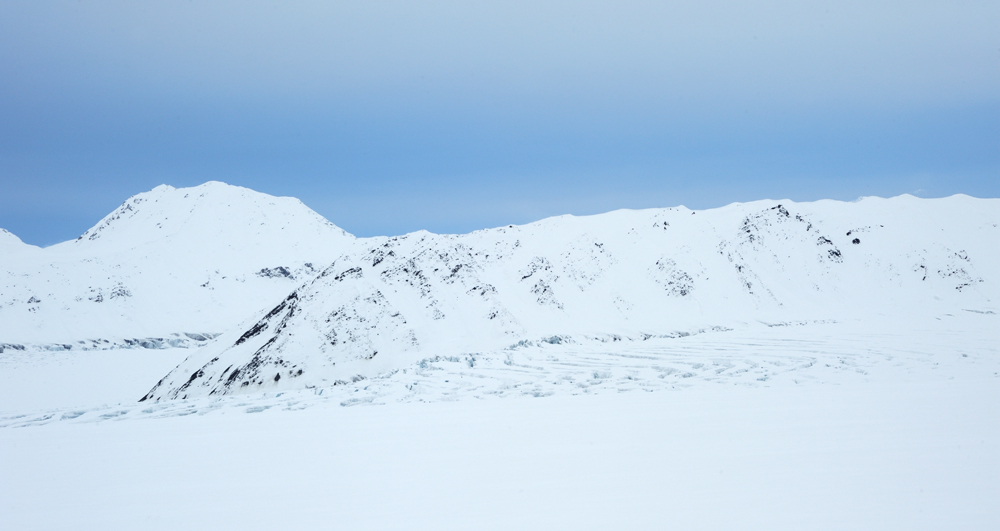
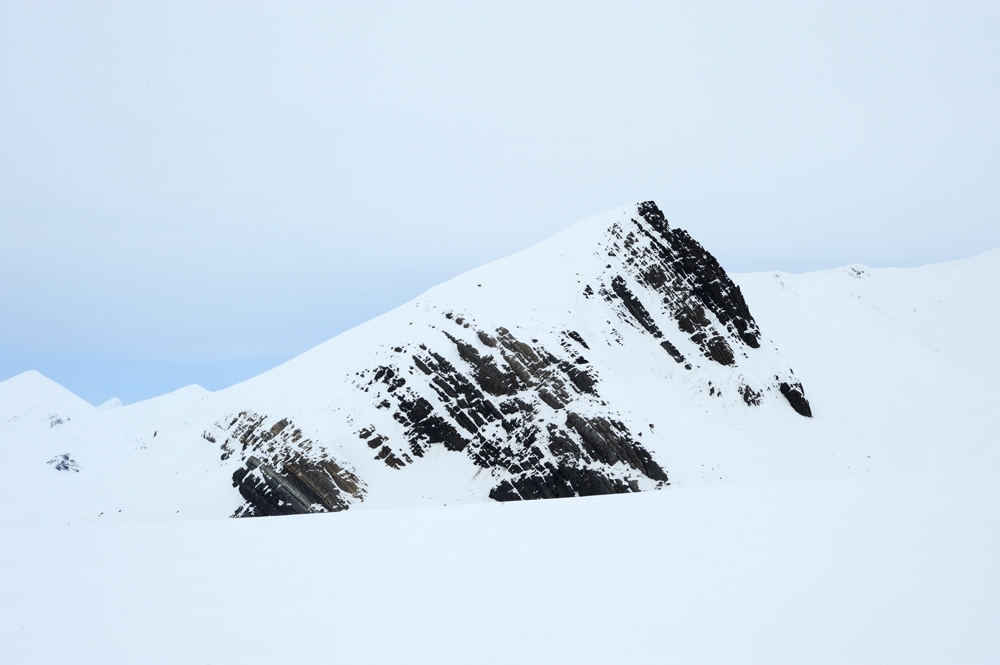
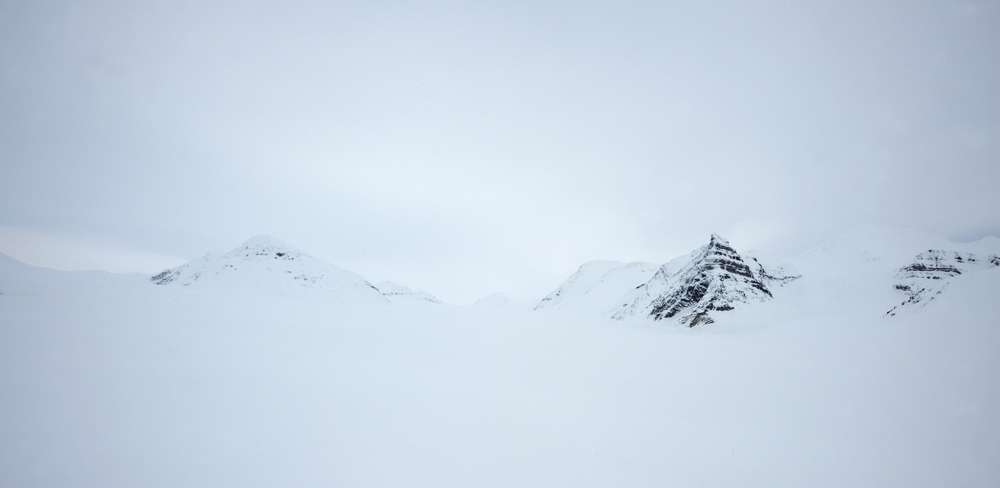
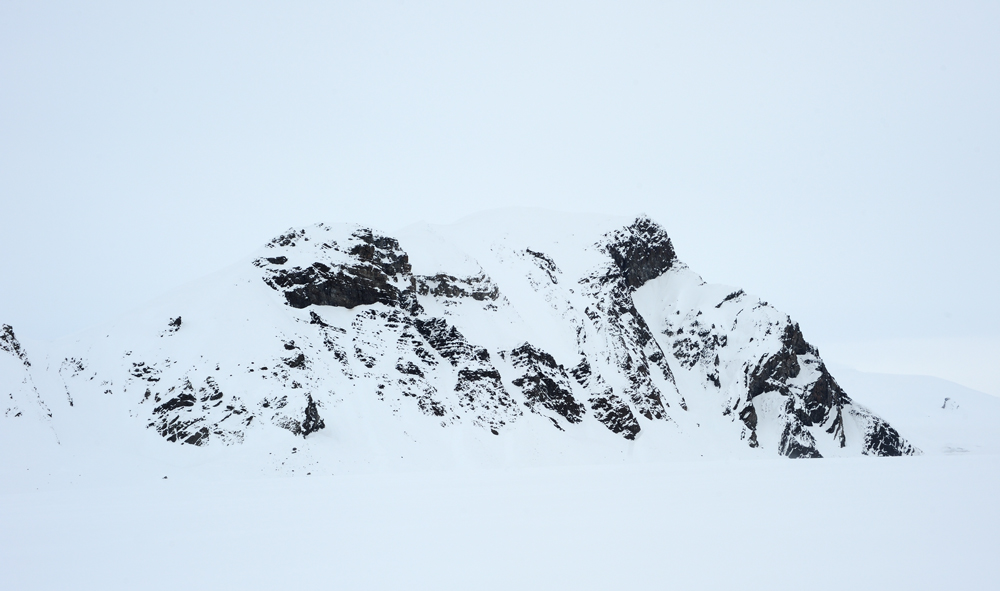
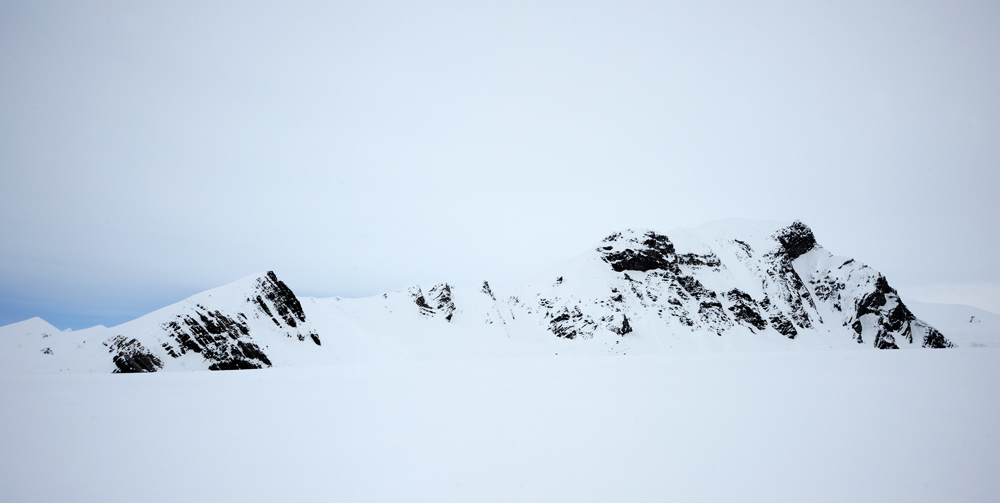
Osbornebreen on the level of our entrance was quite passable. Its right edge has many crevasses, but the left edge is smooth and safe.
However, the wind became stronger with every our step along Osbornebreen, and the temperature dropped down. Since our cross of Devilkbreen we never stopped for the rest, because as soon as we stoped, we immediately froze.
In the evening, when we finally tired and decided to set the tent, the wind was already 30 mph and became stronger and stronger.
The tent was set only at the second attempt. At the first time, the almost ready tent was blown down in one second, and wiped me on its way down. Well, of course, the tent was pinned to the glacier with ice-axes, so it didn’t fly away. And everything because of the skies. We used touring skies, they are relatively hard and don’t bend easily. However our reserve ski was AT, and AT ski is bent easy. I set At ski as a pole for wind corner, and wind just bent it to the ground and tore away the rope. So, for the second time, we changed ski, and everything worked.
Despite the very strong wind, the tent survived the whole night. I mean it was not blown away or tore. However, we waked up in the snowbank. I mean, the snowbank was inside the tent, the tundra came to make close acquaintance.
To be continued …